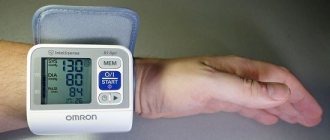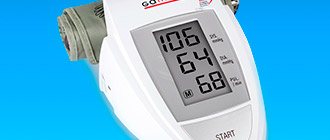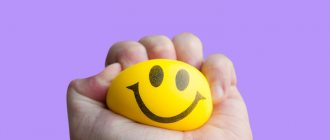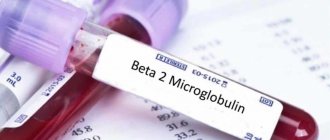People suffering from dizziness and hypertension know how important it is to have in the house and know how to measure blood pressure with a tonometer. This device helps to monitor the effectiveness of the use of medications, as well as to avoid serious complications in the form of hypertensive crisis and other dangerous conditions. people over 40 are advised to monitor their levels using a mechanical or electric tonometer
How to choose a tonometer for home use
Today, there are several options for blood pressure meters on the medical equipment market, each of which has its own advantages and disadvantages. This:
- A mechanical meter characterized by high measurement accuracy and accessibility. Air is pumped into the cuff by squeezing the rubber bulb. Among the disadvantages are: the sensitivity of the device to noise and vibration, the need for the exact location of the phonendoscope. This is the optimal solution for doctors and is not recommended for home use.
- The semi-automatic also works by pumping air with a pear. But all data is displayed on the monitor, which simplifies the assessment of a person’s condition. The device demonstrates not only the values of arterial systolic and diastolic pressure, but also the pulse rate.
- The automatic device is equipped with a compressor that pumps air without human intervention. The best solution for home use, especially when a person measures his own blood pressure.
Before purchasing, you need to pay attention to the following characteristics: availability of service or warranty service, method of powering the device, quality of the bulb (if included), type of cuff and additional options.
Advice! It is worth choosing a device from a reputable manufacturer that can guarantee the quality of its products. Among the best companies holding leading positions in the medical equipment market: Omron, A&D, Little Doctor, B.Well, Microlife, Beurer.
General rules for measuring blood pressure
Blood pressure is most often measured while sitting, but is sometimes done while standing or lying down.
People's daily blood pressure is constantly changing. It increases with emotional and physical stress. It can be measured not only in a calm state, but also during physical activity, as well as in breaks between different types of loads.
Since blood pressure depends on a person's condition, it is important to provide the patient with a comfortable environment. The patient himself needs to not eat, not engage in physical labor, not smoke, not drink alcoholic beverages, and not be exposed to cold for half an hour before the procedure.
During the procedure, you should not make sudden movements or talk.
It is recommended to take measurements more than once. If a series of measurements is made, between each approach you need a break of about one minute (at least 15 seconds) and a change of position. During the break, it is recommended to loosen the cuff.
The pressure on different hands can vary significantly; therefore, measurements are best taken on the one where the level is usually higher.
There are patients whose blood pressure is always higher in the clinic than when measured at home. This is explained by the excitement that many feel when they see medical workers in white coats. For some, this can happen at home as well, as a reaction to measurement. In such cases, it is recommended to take measurements three times and calculate the average value.
Cuff type and size
For home use, you can purchase a tonometer with a cuff that can be attached to the wrist or shoulder. The first option is relevant for athletes who need to frequently measure blood pressure during training, the elderly, and people with large arms. The sensor of the device is very sensitive, which leads to errors in the device during involuntary muscle contraction or during conversation. The hand should be kept leaning against the chest. This way the measurement results will be extremely accurate.
The most popular devices are those equipped with a shoulder cuff. These devices are quite accurate, but only if the cuff size is chosen correctly. For children, a conical or flat cuff is used, the coverage of which is 15-22 cm. For people of thin or average build, medium models are suitable - 22-32 cm. Products designed for 32-42 cm are relevant for large men and women. There is also a method for measuring pressure on the thigh. For these purposes, cuffs of 40-66 cm are produced. If the cuff is chosen incorrectly and is too large, the tonometer readings will be reduced. If it’s small, it’s overpriced. This will not make it possible to determine the real condition of a person.
Optimal hand position when measuring blood pressure
Types of tonometers
Today, aneroid (or mechanical) devices and electronic ones are used to determine blood pressure.
The former are used to measure pressure using the Korotkoff method in a medical facility, since they are too complex for home use, and untrained users receive results with errors when taking measurements.
An electronic device can be automatic or semi-automatic. Such tonometers are intended for daily home use.
Anyone can use an electronic tonometer to measure their own blood pressure and pulse.
Additional device features
Modern meters are distinguished by the presence of additional functions that may be useful, or may not be used by a person at all. Therefore, before purchasing, you should study the capabilities of the device and purchase a device with a set of optimal, rather than unnecessary, options that affect the cost of the equipment.
Standard blood pressure in humans
- PAD technology. Allows you to record and display data on unstable heartbeat (arrhythmia).
- MAM technology. In 2 minutes, the device takes 3 consecutive measurements, calculates the average values without having to remove the cuff and take breaks between measurements.
- Artificial intelligence Intellisense, Fuzzy Logic function. Makes indicators as accurate as possible, and the process of obtaining them comfortable. By creating optimal pressure, pain from squeezing the hand is reduced.
- Measurement quality control system.
- Alert timer.
- Clock and calendar.
- Built-in memory.
- Automatic shutdown and battery saving system.
“Talking” pressure meters are relevant for visually impaired people
No ads 1
Mechanical apparatus
A mechanical device for measuring blood pressure bears this name, because it allows you to measure pressure, regardless of external factors. The main thing is that the person is able to inflate the cuff and evaluate the result. This equipment consists of a blood pressure cuff, a pressure gauge (to measure the air pressure inside the cuff) and a bulb.
A mechanical device for non-invasive blood pressure measurement (also called a sphygmomanometer) is used as follows:
- Cuffs for measuring blood pressure are placed on the arm, as high as possible to the shoulder and secured with special Velcro.
- A phonendoscope, similar to a therapeutic device designed to listen to the chest, is placed on the ears. Its other end is placed on the inside of the elbow bend and pressed lightly.
- Next, the arm cuff is inflated using a bulb. Only after this the results and assessment of blood pressure are summed up.
To find out accurate intravascular results, you will need to place the pressure gauge in front of you and pump the bulb until the pulse can no longer be heard with the phonendoscope. Then you should feel for a small wheel on the pear and turn it. As a result, the measurement cuff will deflate slowly and the person will need to listen carefully to the phonendoscope.
At the moment when the device for measuring blood pressure begins to pulsate loudly in the ears, it will indicate the results of systolic indicators, and at what values it calms down, it indicates diastolic indicators.
In general, this is a very popular pressure measuring device, but it requires special skills and knowledge that not every patient has. Such tonometers are regularly used in clinics.
At retirement age, measuring blood pressure with a mechanical device (without outside help) becomes more difficult. If a person has not previously encountered such equipment and does not understand the essence of its work, then it is unlikely that in old age he will be able to learn to independently read information from a pressure gauge. Also, in old age, hearing begins to weaken - this is the second reason why this research technique also becomes inaccessible to older people.
As a result, in order to regularly measure blood pressure in an elderly person with a mechanical tonometer, the help of loved ones will be required. If a pensioner does not have heirs or they rarely visit him, it is recommended to use improved alternative devices.
Mercury mechanical tonometer
There is also a tonometer that measures blood pressure using mercury. Instead of a pressure gauge, it has a mercury screen, which is used to measure a person’s pressure (evaluate the results). Considering the advent of improved pressure devices, this meter is not entirely convenient to use, because it cannot be transported.
In fact, this arm pressure meter (mercury tonometer) also has a cuff. It works similarly to a modern mechanical sphygmomanometer, but to use it you will need to sit at a table and look at the mercury sensor. During the assessment of the result, the mercury column will be in front of the eyes, so reading the information will not make it difficult for the patient.
Algorithm for the procedure
The accuracy of the tonometer's readings depends on how high-quality the device is, as well as external factors. For example, it will not be possible to correctly measure blood pressure immediately after a run.
Recommendations for working with electric and other types of tonometers are as follows:
- The recommended time for diagnosis of hypertension is from 7 to 9, and also from 19 to 21 hours. It is during these periods that pressure reaches its peak, and timely identification of deviations makes it possible to respond to the situation in a timely manner.
- Many people do not know how many times they can take their blood pressure. For both hypertension and hypotension, you can limit yourself to two diagnostic procedures per day - in the morning and in the evening, if there are no separate medical recommendations.
- It is important to measure blood pressure in an atmosphere of maximum rest. You should turn down the TV volume and do not talk or move during the procedure.
- Half an hour to an hour before measuring with a special apparatus to accurately determine the values, you should not eat, take medications that can affect the result, drink coffee or strong tea, drink alcohol, engage in physical activity, or smoke.
- The best position for measuring blood pressure is sitting on a chair with a comfortable backrest. You can't cross your legs. The arm on which the cuff is worn should be at heart level. To do this, it should be placed on the table. Lying or standing, blood pressure is measured only in exceptional cases.
- Initially, blood pressure is measured on both arms at intervals of several minutes. On which arm the blood pressure was higher, the cuff should be put on that arm in the future.
- In case of arrhythmia, it is important to take 3 consecutive measurements with a device for home use. If the tonometer is not equipped with an additional function (MAM technology or arrhythmia sensor), you should measure blood pressure, relax the cuff, repeat the manipulation after 2 minutes and after another 2-3 minutes. The average value will be the true pressure reading.
- Data on systolic, diastolic pressure, heart rate, date and time of measurement must be recorded in a journal or device memory for subsequent analysis of the course of hypertension (hypotension) and informing the attending physician about your condition.
Important! It is impossible to independently diagnose hypertension without additional examination. The doctor makes an analysis of the patient’s condition based on blood tests, daily blood pressure monitoring, ECG, and only after that decides on a treatment regimen.
No ads 2
Recommendations for intravascular measurement technology
It doesn’t matter at all whether your blood pressure is measured with a mechanical or automatic tonometer, or what the device for measuring a person’s blood pressure is called: shoulder, finger or wrist. It will be necessary to measure intravascular tension correctly, otherwise even the best devices will show an erroneous result.
- The test is carried out on an empty bladder, because the desire to visit the bathroom provokes intravascular tension.
- Whatever device you use, a sitting position will be required. You need to lean your elbows on the back of the chair and not cross your legs, but place them firmly on the floor.
- Devices for measuring a person’s blood pressure, namely cuffs, are put on the bare arm so that clothing does not create additional compression.
To protect yourself from the progression of intravascular diseases, you should consult with a specialist and find out how blood pressure is measured in your case.
This reduces the risk of complications such as heart attack, stroke and hypertensive crisis. The patient should regularly monitor his own intravascular condition to ensure a competent approach to therapeutic therapy and the return of blood vessels to normal.
Pressure indicators: norm and possible deviations
Despite the fact that the generally accepted blood pressure standard is 120 to 80 mmHg. Art., they are not the norm for everyone. These indicators fluctuate depending on the level of physical activity, gender, hormonal levels and age.
Blood pressure table for children, women and men by age
If the indicators differ from the generally accepted ones presented in the table, the pressure must be measured on the second hand. Usually the difference does not exceed 5 mmHg. Art. The difference is 10 mmHg. Art. may indicate the beginning of the development of atherosclerosis. With a difference of 20 mm, we can talk about pathologies in the development of large vessels.
The pulse difference is also displayed on the monitor in the form of black rectangles, which must be taken into account by the doctor when making a diagnosis. Normal values for men and women under 35 years of age are 25-40 mmHg. Art. For older people, the indicators can be higher - up to 50 mm Hg. Art. A decrease in pulse difference often indicates a decrease in cardiac contractility. Exceeding the norm may be a symptom of atherosclerosis, heart failure, endocarditis.
What to consider when measuring pressure
- Stress can significantly change the readings, so you need to measure it in a calm state.
- Blood pressure increases with constipation, immediately after eating, after smoking and drinking alcohol, with excitement, and in a sleepy state.
- It is best to carry out the procedure one to two hours after eating.
- Blood pressure should be measured immediately after urination, since it is elevated before urination.
- The pressure changes when taking a shower or bath.
- A nearby mobile phone can change the tonometer readings.
- Tea and coffee can change blood pressure.
- To stabilize it, you need to take five deep breaths.
- It increases when you are in a cold room.
Connect two blood pressure monitors to one cuff and compare readings
You will need 2 sphygmomanometers (borrow from neighbors, etc.), one of which, properly calibrated, will be the standard. The devices are connected alternately to one cuff and the indicators are compared. If the readings of the device compared with the control device differ, then it requires adjustment. In this way, even the smallest errors can be identified.
Parallel connection
This method is an improved and more convenient modification of the previous one. This method can be used for most models - for those with separate pads connected by a tube to the meter body. You will need a homemade adapter or a splitter from a dropper to connect two tubes through it to one cuff hose.
That is, in this case, the sphygmomanometers are combined with a splitter (as in the photo above). Small tubes are connected to them from its side outlets, and the lining hose is attached to the central spout of the adapter. The algorithm is simple: tonometers are connected, measurements are taken, and the readings of two devices are compared online simultaneously.
The advantage of testing a tonometer at home by connecting two devices in parallel is that it becomes possible to observe the spread of values displayed by two products simultaneously. The disadvantage of this procedure, like the previous one, is that it is impossible for models with an integrated cuff (as in the photo below), immediately in their composition, which cannot be separated.
These are often electronic compact sphygmomanometers; the pad in them is put on the hand immediately along with the body.
The splitter (adapter) can be taken from a dropper, from aquarium compressors, or glued together from the bodies of ballpoint pens. The tubes can be taken from the specified equipment, and instead of them you can even use rubber winding from unusable power cords of household appliances, extension cords, removing the wiring from them.
Measurement frequency for cardiovascular diseases
For vascular and cardiac disorders, blood pressure must be measured systematically. This is necessary to avoid the development of serious complications. Thanks to daily observation and recording of readings, the doctor will always be able to assess the effectiveness of the prescribed treatment, the accuracy of the chosen dosages and the risk of complications.
Hypertensive patients are often interested in how often they can measure their blood pressure with an electronic tonometer. With such a diagnosis, doctors recommend taking measurements on average three times a day:
- in the morning - at least an hour should pass after waking up;
- during the day – an hour after eating;
- in the evening - an hour after dinner.
The most common way to measure pressure is with an electronic tonometer, as soon as such nuances appear:
- severe changes in blood pressure are observed;
- taking new medications;
- dosage adjustment;
- a clear manifestation of VSD.
The number of measurements should also be adjusted depending on the severity of hypertension. If a person shows signs of a hypertensive crisis, then measurements are taken every 20-30 minutes.
Motion indicator
On some tonometer models there is a motion indicator on the display. As a rule, it depicts a human figure.
Motion indicator
Movements while using the device can cause the device to display incorrect data, which in turn will lead to an error in diagnosis. The appearance of a motion icon on the device screen encourages the user to assume a state of rest and take the measurement again.
To which institutions can blood pressure monitors be taken for testing?
A tonometer is a measuring device and, like all such devices, requires special maintenance. Official, with written confirmation, inspections, verifications, adjustment procedures, calibration are carried out by specialized institutions accredited by the state (the list is on the Rosstandart website) for the maintenance of measuring instruments, or standardization and metrology centers (TSMS). The listed enterprises are contacted when it is necessary to check a large number of products, when an official conclusion is required, a guarantee of their serviceability, confirmation of maintenance, for example, for equipment in clinics and medical institutions.
But any user can also contact special SM enterprises; the services are not always free, although they often hold promotions for the population without charging a fee. Nevertheless, methods of how to check the accuracy of a tonometer with your own hands at home remain always relevant: such a procedure can be carried out without wasting effort or time visiting institutions.
So, adjustment and accuracy analysis can be carried out independently or in any institutions that have special testing equipment (services, clinics, large pharmacies).
The need to check the tonometer for accuracy
When using a tonometer, it is important to be able to maintain it, know how to identify errors and adjust it. As standard, new out of the box, the blood pressure meter is already calibrated and ready for use after unpacking without any manipulation.
Although less common, there are devices that need to be adjusted before use, for example, if the product was stored in a warehouse for a long time, experienced factors that reduce accuracy (temperature changes, etc.) or initially had deviations.
But basically, checking the tonometer and monitoring the correctness of the measurements is required after a certain period of using the device, and also even if it was used only a few times, after which it was stored idle. If the device is electronic, then over time faults appear in its circuits, and the mechanical parts also “get tired”. Such phenomena are natural and do not mean a breakdown.
Checking and calibrating the tonometer will also be required after its repair.
When is constant blood pressure monitoring important?
How many times you can measure your blood pressure with an electronic tonometer can be discussed with your doctor. If pathological processes have been identified in a person, then measurements are recommended to be carried out at a constant frequency. This applies to people with the following diseases and conditions:
- hypotensive and hypertensive;
- smokers;
- diabetics;
- people over 50 years old;
- during pregnancy;
- with alcohol abuse;
- people who, due to their occupation, bear excessive responsibility;
- those who painfully perceive all kinds of tense and exciting situations;
- people with defined sleep disorders and lack of adequate rest.
If the conditions listed above are present, the doctor must inform the person how often he should measure the pressure with an electronic tonometer in order to correctly interpret the picture of the condition.
Practical advice
For the picture to be true, you need to adhere to the following recommendations:
- when systematically measuring blood pressure, the indicators of each examination should be recorded, indicating the date, time and value of the indicators;
- periodically carry out control measurements using a mechanical tonometer;
- if the readings of the electronic and mechanical tonometers differ, then the data of the latter are considered true;
- During one session, it is better to measure the pressure several times on both hands.
The tips listed above will help you subsequently correctly assess the condition and choose the most effective treatment.
High pressure indicator
Deviation of blood pressure readings from the norm is a serious signal that may indicate heart disease. And the treatment of such diseases must be approached without delay. That is why on the displays of some tonometer models there is an additional icon that signals high blood pressure.
Tonometer with high pressure indicator











